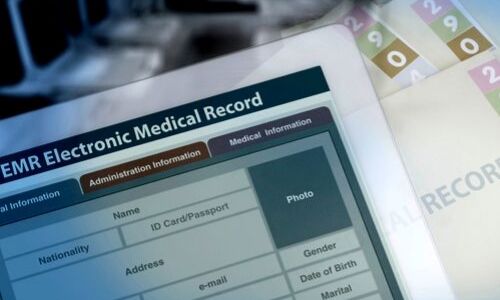Career Planning
|
Finding the Right Practice
Understand the Differences in Practice Fundamentals
As you start to explore various practices and positions, there are few things to be mindful of in terms of practice fundamentals and basic operations.
Consider that you’ve spent at least the last three years of training at one site, maybe longer if you also did residency there. Should you choose to relocate after fellowship, the new location and new responsibility as an attending will bring some predictable challenges as you onboard.

As you start to explore various practices and positions, there are few things to be mindful of in terms of practice fundamentals and basic operations.
Consider that you’ve spent at least the last three years of training at one site, maybe longer if you also did residency here. Should you choose to relocate after fellowship, the new location and new responsibility as an attending will bring some predictable challenges as you onboard.



This list should help you understand what some of those challenges might look like.
While these may or may not be deal breakers, at the very least, be aware of these potential workplace challenges as you begin to find your ideal practice, so you can decide which of these should be explored in more detail.

Electronic Medical Records
As you are likely familiar, most EMRs out there were not built with the specific needs of the neonatal population in mind. While there are some really high-quality niche products out there, you are more likely to encounter one of the big market players, such as Epic or Cerner.
EMRs continue to be a significant source of daily frustration for physicians, and are almost always at or near the top of the list in surveys assessing provider burnout. Know what you will be getting into with your new group.
Different sites may have different levels of maturity and functionality within their local EMRs. Despite what the vendors may tell you, the same EMR can often function vastly differently at different locations.
Frustratingly, not all sites will have the necessary resources readily available to support EMR data entry needs or modifications.
Some potential challenges you might run into:
- No specification for the neonatal population
- Significant manual work done outside of the EMR
- No resources to modify or add user functionality
- Difficulty when trying to mine data for QI projects
- Poor user interfaces resulting in provider frustration, leading to poor documentation: Garbage in, garbage out


Billing and Coding Processes
It is important to know how this is done from site to site. There are varying levels of ownership and responsibility on the individual provider for completing this work.
Some institutions will have entire teams devoted to ensuring accuracy and completeness of necessary requirements. Others will have limited focus on this, meaning that the responsibility falls to the physician. This has significant implications for both reimbursement and liability.
Many fellowship programs offer limited training into the nuances of billing and coding. And the nature of the topic is one that doesn’t typically inspire much excitement in trainees.
While it is most certainly not what drove your passion for caring for babies, it is definitely worth your effort to seek out a Coding Conference or other training opportunity if not readily taught in your program.


Scheduling Clinical Work
Each site will handle their scheduling differently. Some may use commercially available or homegrown software services to help manage this, and some may still be on good ‘ol paper templates.
Regardless, compensation and schedule are two of the most common sources of anxiety listed by physicians, and the actual scheduling of your time and shifts is an important aspect of your work-life balance.
Understand who manages the schedule and how it is actually created. There are various approaches for how you may receive “credit” for your clinical time. This may include a simple accounting of days worked, or wRVUs generated over a certain timeframe, or perhaps a “point-based” system that calculates your work contribution relative to your peers.
Just be aware that processes for quantifying and calculating your clinical time can vary significantly, so be sure to clarify for understanding.
Be wary of “seniority-based” scheduling structures. Coming out of fellowship, you will clearly be the most junior member of the group, and if they don’t hire again for some time, you may always remain low on the totem pole. For this type of structure, be sure to determine how you gain equivalency with the senior members of the group.
Some additional potential challenges you might run into:
- Lack of a documented and consistent “process” that is applied for generating schedules
- Inability to effectively request time off
- Short staffed groups with little time off
- Last minute schedule generation that results in practice members having little time to plan life events, or causes a need to reshuffle other plans to accommodate clinical shifts
- Hierarchical, uneven, or unfair allocation of shifts or “credits”
- Hierarchical, uneven, or unfair allocation of weekends, nights, or holidays


Group Meetings
As a fellow training in an academic medical center, you are likely used to structured and well-attended in-person division meetings. This can actually be rare outside of academic programs, however. Depending on the practice, if neonatologists are actually “off” when not scheduled for clinical work, their may be little interaction within a committee or meeting structure.
Meetings will more likely be conducted via phone or web conference. While this can sometimes be convenient (who doesn’t find a staff meeting far more tolerable with your toes in the sand on the beach…), don’t underestimate the impact that infrequent face-to-face time with your peers may have on practice development and improvement.
Meeting structure will vary depending on size of group and general structure of operations and group management.
Some potential challenges:
- Infrequent or unstructured meetings that result in lack of progress
- Excessive, nonproductive meetings
- Poor participation by group members


Group Dynamics
Practices differ in how they view work vs. time off. Some places will place greater value on high work-hour commitment, others will value their time off. Individuals within the practice will also have different perspectives.
Your goal should be finding a place that values the quality of the care provided to our patients first and foremost, and one who can do so while still aligning with your professional and personal life priorities.
The amount of collegiality and comradery will differ from site to site. Are you seeking a location where you have regular interactions with your colleagues, both inside and outside the walls of the hospital? Or are you content to hand of the baton at the beginning and end of your service blocks, and having the freedom to practice in a more independent manner?
The group dynamic will vary significantly. Be sure to recognize what you want from your practice partners and peer-to-peer interactions, so you can find the right fit for your needs.


Data and Analytics
Many groups express frustration about the lack of accurate data and analytics to help influence the care we provide. Indeed, this has been a challenge for the entire field of medicine for decades.
Despite the presence of EMRs at most all facilities, they have often not been configured in a manner that provides readily extractable, accurate information. Large academic centers, research institutes, and large private practices are more likely to have the resources to create rich clinical databases. For fellows moving to practices other than these, they should be aware of this potential limitation.
Some potential challenges:
- No resources available for obtaining data
- Very manual data collection process
- No value placed on reviewing or assessing data related to patient care


Professional Development
The availability and formality of professional development outside of annual CME will vary from site to site. All state Medical Boards will require regular and ongoing education to take place to maintain licensure. And most insurers and health systems now also require board certification by specialty boards such as the American Board of Pediatrics.
To maintain this certification requires documentation of regular educational participation and other aspects of Maintenance of Certification.
Other aspects of professional development, such as leadership training, Master’s level degree attainment, or supplemental certifications may be supported by some practices and institutions, but not all. Be sure to inquire if you have specific long-term professional development goals.
Some potential challenges:
- Lack of opportunity for professional development
- No mentors available
- Lack of funding for CME or allowance for time off
- No value placed on professional development by the practice or institution


Physician Leadership Styles
Leadership of the group is an important factor in your general satisfaction and will vary from site to site. As a fellow you’ve likely had very structured leadership and hierarchy throughout your training. You have had formal mentors and teachers supporting you daily.
This can change significantly depending on your new practice dynamics, even if you stay at your training institution.
Some potential challenges:
- Poor or ineffective leadership
- Frequent changes of leadership
- Lack of structure
- Focus may be only on clinical productivity, grant procurement, publication status, etc.
- Leadership may not be visible or have the authority to make changes on behalf of the group


Availability of Resources
Generally speaking, you have likely become used to many resources available during your training. Many academic medical centers have substantial support from research teams, state and federal funding, philanthropy, and a robust infrastructure built on a brand of prestige and innovation.
While certainly not always the case, some practices may not have this same depth of support. And in other cases, some practice settings may actually have greater resources and perhaps less bureaucracy which may make progress far easier to achieve.
Regardless, it’s important to be aware of the potential for substantial differences to exist. Refer to what you are looking for specifically and be sure to inquire about the level of support offered in that particular area to ensure adequate support when exploring practices.
Go into as much detail during the interviewing process as you need to make sure you the program is the right choice for you.
Some potential challenges:
- No resources (people or funding) available for certain initiatives or projects
- Being the ONLY person dedicated to an initiative or project
- Not being reimbursed or paid for your time spent on an initiative or project
- No support or guidance for certain initiatives or projects


